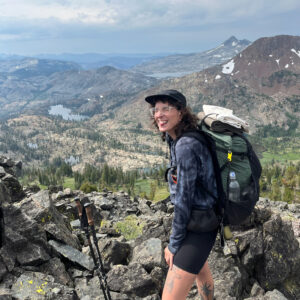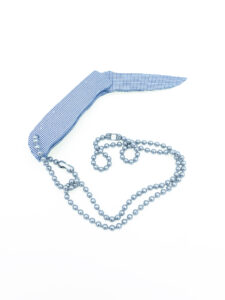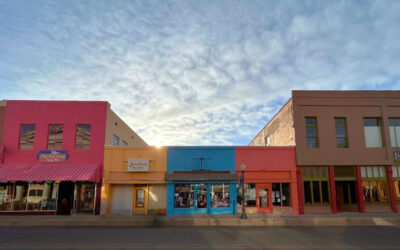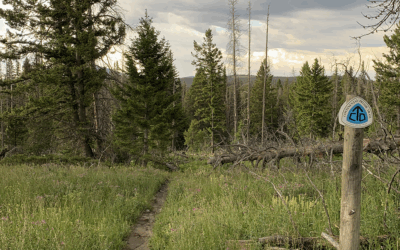Where Art Meets Trail: Introducing CDTC’s First Artist in Residence
Born from a desire to experience and see the Continental Divide Trail through a new lens, the Continental Divide Trail Coalition’s inaugural Artist in Residence program invites creatives to explore and interpret the 3,100-mile trail in fresh and meaningful ways. We’re thrilled to introduce leslie dylan boyd (they/them) as the first artist to embark on this journey—blazing a trail for future creatives while celebrating the landscapes, stories, and communities that define the CDT.
leslie boyd is an artist, educator, runner, climber, and avid backpacker. They have hiked the Colorado Trail, John Muir Trail, Tahoe Rim Trail, Pfiffner Traverse, and Wind River High Route among many other short on and off-trail adventures. They’re originally from Philly but have lived in Colorado since 2018 where they are an Associate Professor of Art at Metropolitan State University of Denver.
This year, leslie will begin their southbound thru-hike of the CDT, carrying with them not only gear but a vibrant creative practice rooted in questions of safety, belonging, and identity as a queer body moving through so-called “wilderness” spaces. As they hike, leslie will draw inspiration from the land and the people they encounter, developing original artwork and community-centered projects shaped by their time on the trail.
MEET THE ARTIST: leslie dylan boyd
 Q: What drew you to a residency along the CDT, and what excites you most about bringing your art to the CDT?
Q: What drew you to a residency along the CDT, and what excites you most about bringing your art to the CDT?
leslie: I have been making art all of my life, and working as a full-time artist and arts educator since 2015. My love of backpacking, comparatively, came much later. I hadn’t backpacked a day in my adult life prior to thru-hiking the Colorado Trail in 2021. And I was hooked.
Over time, my passion for backpacking found its way into my artist practice. Long trails have become the “space” where much of my research and ideation takes place. Walking 15-25 miles a day is tremendously physically and emotionally difficult. That repetitive challenge becomes a meditative act, and I engage with the environment and my body in a way that simply doesn’t happen in my home studio. I’ve met other artists who have shared this experience which compelled me to approach the CDTC with the idea of developing an artist residency program to formalize this opportunity for artists.
I am most interested in hiking the CDT due to its more rugged and isolated nature. The mental and physical challenges this will pose, as opposed to the often hyper-connected nature of the Appalachian and Pacific Crest Trails, is better suited to the style of backpacking I enjoy. Up to this point, my longest continuing stretch on any trail has been 5 weeks and that was prior to my art starting to be informed by my passion for backpacking. I’m really looking forward to having the designated time and space, and job, really, of exploring my creative practice while on trail for ~4.5 months.
Q: How are you preparing – both creatively and logistically – for time on the trail?

Untitled (compass). 2024. Paper and aluminum pendants on 28″ chains..
leslie: In April I will be spending one week as a fellow in the Outdoor Recreation Archive at the University of Utah. I am really excited to look through their extensive archives! I’m not quite sure how this will influence my work yet, but I am looking forward to having the designated time and space to explore their materials as I prepare for my hike of the CDT.
As for logistics . . .ooph! Right now I am waiting to see whether or not my lottery entry for Glacier National Park will allow me to book wilderness backpacking permits (update: I was not so lucky). I have a rough itinerary for my hike written out, but learned after my first thru-hike that it isn’t worth spending too much time building out the details as they will likely/inevitably all have to change. So the logistics really apply more to my life at home! I’m trying to sublet my apartment, making sure my job won’t fall apart while I’m away, and organizing the gear I’ll be leaving behind with a best buddy to send me on trail as needed.

Untitled (knife). 2024. Paper and aluminum pendants on 28″ chains.
Q: What themes or ideas do you hope to explore in your work during this residency?
leslie: In 2021 I thru-hiked the 485-mile-long Colorado Trail. Having never backpacked as an adult prior to this trip, in my months of preparation I was most afraid of what it would be like to encounter wild spaces, unknown creatures, and inclement weather during my solo journey. Those fears slid away on trail. Instead, I was most struck by a compulsion to make sense of my queer, femme body in the spaces I passed through and the people I met along the way.
In early 2024 I began to develop artwork that examined these themes of safety and belonging as a queer body in “wild” spaces. These were created through a variety of media that includes video, paper, jewelry, installation, and performance. I am looking forward to continuing this exploration.
I’ve also recently become intrigued by desire trails and am looking forward to ruminating on how this relates to my existing research!
Q: How do you anticipate the experience of being on the CDT might challenge or expand your artistic practice?
leslie: My art practice is very much research-based. I fixate on a theme or a question, gather information, and collect materials that are conceptually/contextually/formally related. These get pinned to the wall of my studio and then I “sketch” 3-dimensionally at my work table. Although I anticipate most work will be made once I return to my home studio, I am excited by the challenge of keeping up with creative production while on trail! Right now I have green screen gloves, a handmade gilly net, and a tiny video camera on my LighterPack list. . . we’ll see if these make it to Chief Mountain.
Q: What role do you think art can play in connecting people to the outdoors and the spirit of the CDT?
leslie: Visual art communicates without words. It helps humans to relate, to question, to affirm, to protest, to tell secrets, to spread joy, and to express or feel emotions that cannot otherwise be named. Art is a powerful tool of connection. There are so many elements of the wilderness, of hiking, of long trails and the experience of walking them, and of relating our bodies to an experience or a place that feel impossible to articulate with words. I hope my art can help to bridge some of these chasms.
 Q: What are you most curious or nervous about as you embark on this experience?
Q: What are you most curious or nervous about as you embark on this experience?
leslie: Walking for 5 months is a great privilege and the temptation to turn off the outside world will be high. But that’s not possible when I have to worry about what legislation might pass that will affect my community and personal well-being as a queer person, and my students and loved ones that are immigrants. Normally I would be nervous about post-trail depression, or how life would move on without me, but in this moment I am nervous about my rights being stripped and my loved ones deported.
I am most curious about how I (both as a person and an artist) will be changed by this journey. I know that is inevitable as past long hikes and even long stints of travel have had such a profound influence on me.
Learn more about leslie and their work: https://www.lesliedboyd.com/unfamiliar.html

 Q: What are you most curious or nervous about as you embark on this experience?
Q: What are you most curious or nervous about as you embark on this experience?

